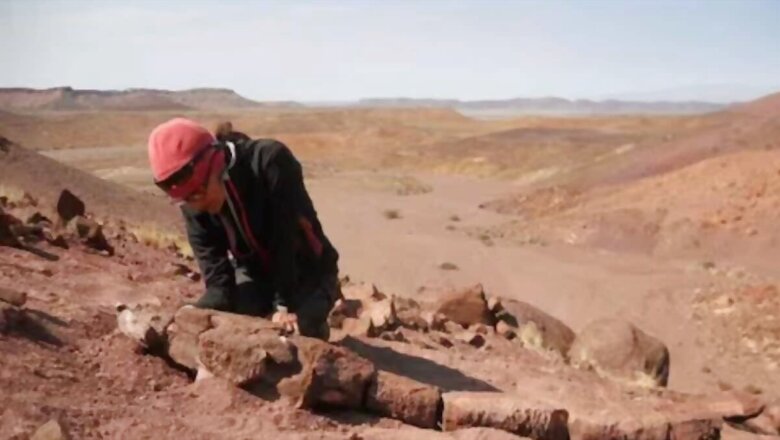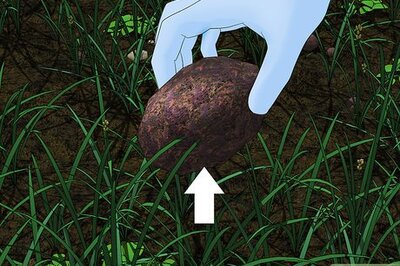
views
In a pathbreaking discovery, palaeontologists have unearthed the fossilised remains of a colossal salamander-like creature that reigned as a top predator long before the age of dinosaurs.
The ancient creature, named Gaiasia jennyae, was about 2.5 meters long and possessed a massive head reminiscent of a toilet seat with enormous interlocking teeth.
Gaiasia Jennyae lived about 280 million years ago in the swamps and lakes of what is now Namibia, a region that was once part of the southern supercontinent Gondwana near the South Pole.
Even after the harsh conditions, this apex predator adapted to its environment by lying in wait with its mouth gaping, ready to slam its robust jaws into unsuspecting prey.
The discovery of several incomplete fossil specimens, including skull fragments and a nearly intact spine, gave researchers valuable insight into Gaiasia’s anatomy and hunting behaviour.
With a skull about 60 centimetres long, the creature had a robust jaw structure capable of grasping large prey.
Its pronounced, interlocking fangs lined its entire mouth, suggesting a unique hunting strategy that relied on ambush rather than speed. The uniqueness of Gaiasia Jennyae challenges previous ideas about the evolution of land animals, as most discoveries have been made in ancient equatorial regions.
The revelation that Namibia was once part of Gondwana near the South Pole suggests a stark contrast in ecosystems compared to regions near the equator.
Professor Claudia Marsicano of the University of Buenos Aires, who led the excavation of the fossil, was amazed at the discovery of this extraordinary specimen. “I knew as soon as I saw it that it was something completely different. We were all very excited.”
Although it resembled a dangerous, drastically reduced salamander, such as a giant axolotl, it was not a true amphibian. Instead, the animal belongs to an archaic group of four-legged vertebrates, the tetrapods, from which amphibians, reptiles, birds and mammals eventually evolved.




















Comments
0 comment